By Candace P. Damon
Candace Damon, a longtime senior leader of HR&A, was elected to be its Board Chair in December 2021. She also sits on the jury of the Urban Land Institute’s recently renamed ULI Prize for Visionaries in Urban Development.
Eighteen months ago, my colleague, HR&A’s CEO Eric Rothman, published a statement in this forum that called on our firm and its collaborators to act on a shared responsibility to interrogate our roles in perpetuating racist systems in urban development. He went on to suggest that the Urban Land Institute (ULI), the oldest and largest network of cross-disciplinary real estate and land use experts in the world, should be a leader and collaborator in this effort. The specific steps he urged ULI to take were the recommendations of a coalition of BIPOC and white ULI leaders, many of whom had been concerned about these issues for years and who had seized the moment.
Since that piece was published, ULI, we at HR&A, and virtually all of our collaborators have engaged in a process of self-examination and change, to address both who is represented in our industry and how we do our work.
We are pleased that since our initial call to action for change within our industry, ULI has renamed its most prestigious award, which had been named for a developer and philanthropist who perfected the use of restrictive covenants; appointed a senior executive who is charged with supporting DEI within the organization; launched a variety of other DEI initiatives, including the recent publication of a report on diversity efforts within commercial real estate; and significantly diversified its leadership.
Indeed, among the first steps virtually all of us have considered is how we can diversify the racial and gender composition of the industry. At HR&A, we sought guidance from outside experts and consulted with members of our staff and alumni to interrogate our recruiting, hiring, and evaluation practices. Our firm is now the most diverse it has ever been, with more than 40% of staff identifying as Black, Hispanic, Latino, Latina, Asian, or two or more races.
While we’ve made meaningful progress in how we recruit and hire, we have ahead of us the much harder task of ensuring that our diversity of staff feels welcomed and has access to training, sponsorship, and other support necessary to succeed. HR&A is committed to ongoing work on diversity, equity, and inclusion; to incorporating new approaches to equity in our work; and to continued partnership with our industry, all of which will strengthen us as a firm.
Many of our readers have been grappling with these issues for years. This issue, we seek to elevate some of that experience, viewed through the lens of two conversations about diversification of the industry that I’ve recently had with two longtime friends. Of particular interest to me in these conversations were these colleagues’ perceptions of the different requirements for building diversity in the industry at different career points: while one conversation reflects on what it takes to engage an adolescent in imagining a career in real estate, the other considers what it takes to support a young professional seeking leadership opportunities.
My longtime client and collaborator, Tyrone Rachal, is a founding Principal of Red Rock Global and President of Urban Key Capital Partners, both Atlanta-based, and was recently appointed a ULI Global Governing Trustee. Over the course of a career that has also included stints in financial services at some of this country’s largest private firms and in public development and development finance, Ty has been deeply engaged by how, having excited individuals from under-represented groups about a career in real estate, do you position them for success and leadership. His conviction is that, by doing so, there will be people in positions of power who are willing to commit the time, political capital, and resources to resolve the issues that often stymie investment in under-served communities.
My colleague Joseph Cahoon, a Senior Advisor at HR&A, is the Director of the Folsom Institute for Real Estate at the Cox School of Business at Southern Methodist University (SMU). Over the past 18 months, he has renewed a personal commitment to ensure that the classes entering schools like SMU are more representative of this country’s communities than today’s classes are. Over this past summer, he led SMU’s effort to support a group of mostly Texan high schoolers, mostly BIPOC, who were participating in the Real Estate Executive Council’s (REEC) Real Estate Exchange Summer Program (REEX). The REEX program engages diverse high school students in a three-week long, first exploration of a career in commercial real estate, culminating in a competition among university-sponsored high school cadres. In its first engagement with REEX, the SMU-sponsored team won the 2021 summer competition.
I hope you will enjoy these excerpts of my conversations with Joseph and Ty as much as I did the longer conversations.
After you listen to Ty and Joseph, I hope you will reach out. I would like to hear from those of you who are also working on these issues; I speak for all my colleagues in saying we welcome your continued partnership and leadership.
HR&A is thrilled to announce a new class of leaders at our firm, including a new Chair of our Board and additions to our executive leadership team.
As a group, they exemplify our mission to ensure implementation of our clients’ aspirations. They are motivated by complex challenges, dedicated to clients, and fulfilled by making lasting impact. They come from a diversity of backgrounds, have a breadth of lived experience, and share a passion for cities.
This class, together with the rest of our Partners and employees, will continue working to create vital places, build more equitable and resilient communities, and improve people’s lives.
Happy New Year and stay tuned for more from HR&A in 2022.
Chair of the Board
Candace Damon has been a senior leader at the firm for over three decades, advancing from Director to Principal to Partner to Vice Chair and now, Chair of the Board of Directors.
Her career at HR&A has been dynamic: she has focused on effective public capital program management, downtown and waterfront redevelopment strategy, incentivization of investment in energy efficiency in commercial real estate, non-profit institutional growth, and the crafting of sustainable funding structures for parks and park systems. She has worked in virtually every major city in the U.S. and has consulted internationally.
Candace has shaped the firm’s trajectory and instilled a culture of excellence and mentorship across HR&A’s six offices. She serves and has served on multiple local and national non-profit boards and is an Honorary Member of the American Society of Landscape Architects.
As Chair, Candace will champion the firm’s growth in both traditional areas of strength and emerging practice areas, ensuring that we continue to create lasting impact in communities across the world.
Partner
Bret Collazzi / New York
Over eight years at HR&A, most recently as a principal, Bret has shaped ambitious urban investment strategies across New York and nationally, including more than $100 million of downtown investment in New York State, plans to transform Rikers Island into a green economy hub, and the development of NYC’s long-term plan, OneNYC. He recently led successful applications for the $1B Build Back Better Regional Challenge, a marquee Biden Administration program to transform regional economies and support equitable recovery across the country. Bret is a proud Bronx native with prior experience as a journalist and legislative aide. As a Partner at HR&A, he is excited to continue shaping the future of New York and beyond.
Jonathan Meyers / New York
Jon started his career at HR&A in 2001 in the New York Office and returned in 2016 after serving as the COO of the Trust of Governors Island. He’s provided unwavering value for a range of public and private sector clients, including the preliminary analysis of saving the High Line as a public open space. As a Partner, he will continue advising on the financing and implementation of complex real estate projects in the New York City metro, while also advancing a range of emerging policy issues, including equitable economic development, real estate and housing policy and open space governance and operations.
Jose Serrano-McClain / New York
Jose has been a leader in the HR&A Inclusive Cities and Urban Tech and Innovation practices since 2018. He is currently serving as the Co-Executive Director of NYC Speaks, a large-scale public engagement and government transformation initiative in NYC. As a Partner, Jose will advance a range of projects focusing on people-driven transformation of local government and economic planning for cities requiring strategies at the intersection of equity, innovation, and environmental justice. Jose is currently working on a comprehensive economic plan for Miami-Dade as it grapples with expanding opportunity in the green economy. Jose has worked in the NYC Mayor’s Office of Tech and Innovation, as a Community Organizer in Queens, and at the Federal Reserve Bank of New York.
Executive Management
Alex Lebow / Head of Growth
Alex most recently led a range of external sustainability initiatives at Nike and served as a senior aide to former New Orleans Mayor Mitch Landrieu. He will launch the firm’s Growth team and evolve HR&A’s approach to business strategy and development, marketing and communications, and product development.
Joy A. Lo / Chief of Staff
Joy returns to the firm after most recently serving as the Director of Communications at the Berkman Klein Center for Internet & Society at Harvard University and previously working for Microsoft and the Urban Green Council. She will lead HR&A’s focus on strengthening culture and systems, improving internal communications, and developing the firm’s executive leadership.
Niki Stanley / Head of People
Niki previously served as both the Director of Human Capital and first ever Chief Diversity Officer at the NYC Department of City Planning, following a nine-year career at the NYC Department of Education. She will launch the firm’s People team and evolve all talent, recruitment, human resources and professional development initiatives.
Managing Principal
Aaron Abelson / Dallas
Aaron will continue leading the HR&A Dallas office while also advising clients on public-private real estate development, open space planning, and equitable economic development. He provides analysis and strategic guidance to move large-scale visions from plan to implementation, including Rice University’s development of The Ion District in Houston and the City of Dallas Economic Development Policy.
Principal
Our Principals lead teams and clients through strategic analysis, strategy development, and implementation planning.
Nina Bennett / Dallas
Jane Carlson / Los Angeles
Jonathan Haragold / New York
Sarah Kirk / Raleigh
Ignacio Montojo Segura / New York
Kristina Pecorelli / New York
Director
Our Directors lead analysis, research and project management across practices and the executive team.
Ada Peng / Los Angeles
Christiana Whitcomb / New York
Eri Furusawa / New York
Giacomo Bagarella / New York
John Morgan / New York
Kimberly Taylor / New York
Mary Jiang / Washington D.C.
Senior Analyst
Our Senior Analysts support a wide range of critical services across practices.
Syed Ali / New York
Mara Basich-Pease / Los Angeles
Keiley Gaston / Washington D.C.
Hannah Glosser / New York
Jenna Gray / Los Angeles
Landry Doyle-Wiese / Los Angeles
Mark Kubaczyk / Dallas
Ashley So / New York
Claire Summers / New York
Amelia Taylor-Hochberg / Los Angeles
Analyst
Our Analysts supports research and analysis.
Ariel Dames-Podell / New York
Benjamin Cole / Los Angeles
Carl Hooks / New York
Ethan Paik / New York
Solomon Abrams / Washington D.C.
The Broadband Equity Partnership, powered by HR&A Advisors and CTC Technology & Energy, have announced the launch of the National Broadband Resource Hub: a first-of-its-kind, integrated online platform for state, county, local, and tribal government officials working to deploy broadband funding.
The Hub provides access to a resource library, online community forum and message board to connect with other leaders, and a help desk featuring the option to book an appointment to speak with broadband experts.
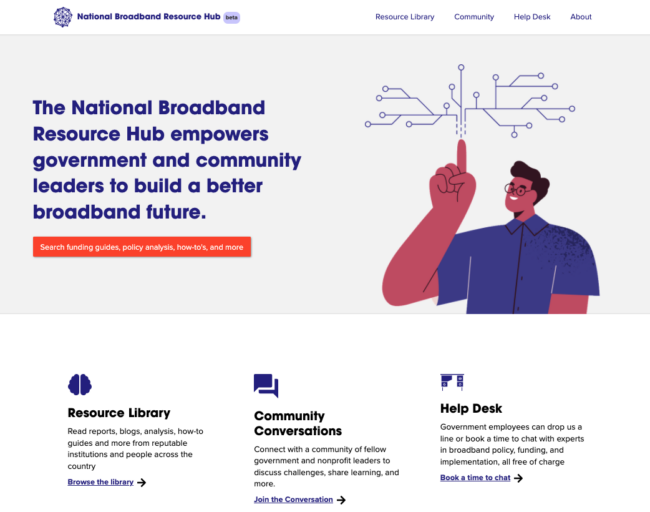
The National Broadband Resource Hub is an initiative of HR&A Advisors and CTC Technology & Energy, and is made possible through the generous support of the Ford Foundation and Schmidt Futures. Click here to learn about our other efforts to close the digital divide.
HR&A is excited to manage NYC Speaks, a new seven-month public engagement effort engaging New Yorkers across the five boroughs on the future of city government.
NYC Speaks will engage New Yorkers from every corner of the city through a sustained, months-long effort to gather ideas, concerns and other input through both a citywide survey and large-scale community discussions, followed by a series of planning workshops designed to convert those ideas into tangible government actions. NYC Speaks will use the information gathered through this process, invite collaboration with the new administration, and create a blueprint for the future of the city, complete with concrete priorities, policies and budget items.
This initiative is an independent initiative funded by the Goodnation Foundation, an IRC 501(c)(3) organization, and managed by HR&A Advisors, a mission-driven, employee-owned urban planning and economic development consulting firm based in NYC. NYC Speaks will partner with a robust network of civic and community-based organizations to co-lead this process. The initiative is also convening philanthropic institutions such as the Ford Foundation, Robin Hood Foundation, Galaxy Gives, Trinity Church Wall Street Philanthropies, FWD.us, and the New York Women’s Foundation.
For more information and to stay updated, please visit: https://nycspeaks.org
HR&A applauds President Biden and Congress for passing the Bipartisan Infrastructure Investment and Jobs Act.
As a firm, we support this historic opportunity for local, state and federal leaders to advance more equitable and resilient communities.
We also congratulate former New Orleans Mayor Mitch Landrieu for being named as Senior Advisor and Infrastructure Coordinator. HR&A has been honored to collaborate with Mayor Landrieu and the City of New Orleans on critical green infrastructure, economic development and affordable housing initiatives.
HR&A strongly believes in the vision and priorities established by this legislation, including addressing climate change, closing the digital divide, and creating economic opportunity that reaches everyone.
Strengthening colleges and universities by creating vibrant local communities
Written by Giacomo Bagarella, Kate Collignon, Ariel Dames-Podell, and Mason Ailstock
Colleges and universities serve as economic anchors of their communities. This is especially true in small and mid-sized cities where universities are frequently the largest local employers and a primary source of young and ethnically diverse residents. As higher education institutions face demographic and financial challenges due to pre- and post-pandemic trends, they can bolster their surrounding communities – and support their long-term viability – by investing in neighborhood improvements and economic opportunity for local residents.
There are more than 3,200 public and private nonprofit colleges and universities in the United States. Beyond awarding degrees, these institutions attract new workers and residents to their towns; provide white- and blue-collar employment; and support economic mobility through their educational and training missions. This is true at a variety of scales. Texas A&M University brings federal research funds to College Station (population 114,000). In Meadville, Pennsylvania (pop. 13,000), Allegheny College attracts students from around the world and creates a pipeline into industries such as aerospace and marketing. In Greencastle, Indiana (pop. 10,000), DePauw University has supported a public-private partnership to restore downtown’s historic facades and catalyze alumni investment in formerly vacant space.
Relationships between schools and communities have been decades or centuries in the making, yet current conditions make collaboration essential to buttress shared economic interests. Many institutions operate at a deficit, seeking to balance growing expenditures on facilities and programs with tuition revenue in a highly competitive market. Multiple forecasts project a significant decline in high school graduates and college enrollment in the next 10 to 15 years.
Amid these economic and enrollment challenges, schools face a need to adapt to changing student profiles and preferences. High school graduates are becoming increasingly diverse, reinforcing the imperative for all higher education institutions to ensure both the school and its surrounding community are welcoming and inclusive. Moreover, one fifth of the high school class of 2020 reported changing their first-choice institution following the onset of the COVID-19 pandemic, favoring schools that were public, closer to home, and more capable of supporting remote learning. At the same time that colleges were grappling with the shifts resulting from the pandemic, their host communities were grappling with lost revenue, activity, and cultural assets – a preview of more permanent challenges that could result without the public/private partnerships to ensure environments that sustain enrollment.
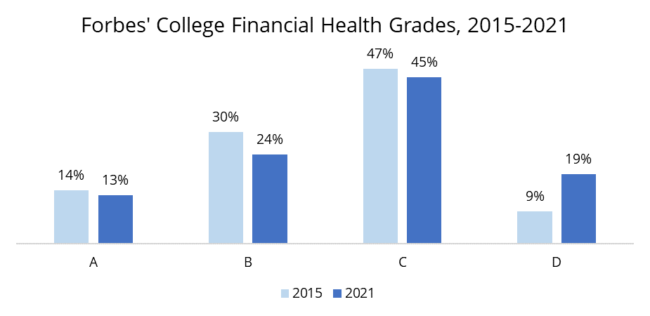
Source: Forbes evaluation of financial data from private nonprofit 4-year institutions.
Note: “F” category excluded due to lack of data. 2015 sample size: 909. 2021 sample size: 921.
55
Private nonprofit colleges or universities that closed, 2016-2019 (Forbes)
-5%Decline in high school graduates, |
-10%18-year-olds enrolling in 2- and 4-year schools, 2020-2029 |
57%
Share of high school graduates who are BIPOC in 2036, up from 49% in 2019 (Western Interstate Commission for Higher Education)
As campus life slowly returns to “normal,” administrators should work with local stakeholders to keep host communities vibrant and diverse over the long term. Students, faculty, and staff are more likely to choose institutions with dynamic retail and dining offerings, a walkable downtown and attractive streetscape, and vibrant local and school communities. Likewise, residents benefit from employment and business opportunities as well as cultural and other amenities offered by the institution. Several recent efforts offer promising models:
- In Philadelphia, the 25-year-old University City District partnership has brought together the University of Pennsylvania and Drexel University with community organizations, nonprofits, and private companies to improve quality of life and economic vitality in West Philadelphia. Its goal is to support neighborhood vitality by transforming public spaces, providing workforce development programs, and organizing events and programming for residents, workers, and visitors. As a result, University City attracted retail and employers; local residents gained access to better job opportunities and higher wages; and the universities experienced improved public space and amenities around their medical and research facilities and saw increases in the number of graduates who found local job placements. It is of course also necessary to acknowledge that University City lies on the former Black Bottom neighborhood, thousands of whose residents were displaced by university- and hospital-led development starting in the 1950s.
- At a smaller scale, since 2014 Colby College has catalyzed alumni and philanthropic investments in downtown Waterville, Maine, a city of 17,000. The College purchased and redeveloped multiple properties, creating its first downtown student housing to reinforce ties between undergraduates and the community, building a new hotel, and establishing facilities for visual and performing arts. Moreover, Colby has committed to keeping the downtown properties it acquired on the City’s tax rolls permanently. These investments are helping Waterville pivot from its status as a former mill town to an attractive destination for students, businesses, and tourists. The City expects increased fiscal revenues and has already seen employment growth and reuse of formerly vacant historic buildings, while Colby believes its efforts will distinguish it from competitor institutions, attract students and faculty, and provide a richer experience by integrating students in civic life.
- In Salt Lake City, the University of Utah is planning to convert the neighborhood around the Rio Grande Depot, a former train station, into an innovation district that achieves civic, educational, and economic goals. The urban district, which would connect to the University’s main campus through a light rail line, would contribute much-needed teaching, lab, and office space for the university and industry in the rapidly growing biotechnology and health sciences sectors. The university plans to co-locate with employers to accelerate education, research, and commercialization, benefiting its programming and students, generating revenue by leasing space, and boosting the region’s economy. As part of its master plan, it will increase the district’s density, contributing affordable housing, a public green, event spaces, and streetscape upgrades to support the City’s goal of revitalizing a previously neglected neighborhood.
The end goal of these and other efforts is to strengthen both universities and cities: neither can succeed if the other is left behind. Producing improved quality of life and education is a mutually beneficial imperative to strengthen finances, attract and retain talent, and foster thriving places and communities.
Written by Kate Wittels, Partner, HR&A Advisors & Matthew Micksin, Senior Director, Real Estate, Common
The majority of office workers are anticipating a new normal: a hybrid work schedule where only 2-3 days of the week are spent in the office. The implications of this shift on commercial building demand has been widely reported on, including last week in the New York Times and Vox, and the effects on workplace activity, company culture, and a wide array of other office-centric factors have also been analyzed in great depth. But what impacts will this change have on the place where we’ve spent much of the pandemic: our homes?
Shifting 40-60% of work activities to the home is a change of scale without much reference in living memory. Major urban metro areas will see shifts in the size, shape, location, and amenities of residential offerings. In a recent survey of potential renters, Common, the leading residential brand that manages, designs and leases multifamily properties, found that nearly 50% expected to work from both home and the office — with those expecting to either return to the office full-time or remain fully remote as most of the remainder (15% each).
Without new types of workspace product, the needs of remote workers will continue to be unmet by the supply and size of current residential units. New housing that simply offers larger units will deliver fewer homes, exacerbating existing supply shortages and missing this unique opportunity created by changing consumer demands. For the best results, these new products will need to be delivered using innovative strategies from developers, operators, and local land use policymakers.
The Goldilocks Problem
The rise of remote work means that the home will serve functions it hasn’t traditionally been asked to before. This is especially true for apartments, which typically lack the luxury of extra rooms for a dedicated office. In the same survey cited above, Common found that 37% of respondents desired a coworking offering in their residential building.
However, to accommodate coworking in-unit, a one-bedroom apartment is too small, and a two-bedroom is too big, and not just for tenants: additional square footage per unit makes deals more difficult for developers to pencil, as rent per square foot declines each time a bedroom is added. The addition of a bedroom or den area as an office space increases the rent of a unit and uses the space efficiently, but it’s unlikely developers will want to commit 100% of their units to these relatively novel solutions. Thus, developers will be left choosing between ignoring the market’s desire for more space per unit and increasing rents across the board to recover the lost revenue from expanded units.
Solutions
Developers working alone can and will introduce new work-friendly residential products. We think they are more likely to create truly vibrant communities if they partner with other private and public sector actors. Further, remote workers can’t wait for the long lead times of new construction, so these solutions must address both existing stock and new development.
For existing residential and commercial building stock, developers and operators have three options.
In-building coworking
Rather than increasing each unit’s size by as much as 60%, developers can dedicate one floor to coworking space. This approach will be especially viable in recently built Class A properties, which often provide amenity space that can be hit or miss in terms of resident utilization. Creating both living and working spaces establishes two connection points between renters and their buildings and should increase retention.
Neighborhood coworking
Another option for developers is to support and partner with a neighborhood coworking outlet. Companies like Daybase, a network of local, flexible spaces that offer office space close to home, offer workers more options to work from close to home rather than in their home. A readily available coworking option in an attractive location generates a higher price per square foot for residential developers and competes well with a suburban product.
City-backed zoning interventions
Long-term solutions will rely on City-backed land use interventions that both mitigate market pressures on developers and tenants and allow for more vibrant neighborhoods. To address the Goldilocks Problem and ease the tension between more space versus higher rents, cities should incentivize coworking products in new construction.
In urban areas where demand is high, the simplest way to do this is by increasing permissible height and bulk for products with coworking components and exempting that dedicated floor area. For new developments in high-density urban cores, zoning to allow flex workspace without reducing buildable residential square footage would help lower the cost burden, which work-from-home companies are shifting onto their employees.
These zoning changes can also help unlock new opportunities in neighborhoods grappling with the changing role of retail corridors. In many neighborhood retail areas, ground floor office use is prohibited, and lower densities limit the supply of suitable office space. Allowing coworking spaces to occupy ground floor suites – perhaps paired with design regulation to ensure a safe and lively street experience – would serve the dual purpose of generating new activity in neighborhood retail corridors and addressing the evolving need to offer new workspaces.
Written by Dorraine Duncan and Bret Collazzi
Last month, the U.S. Economic Development Administration (EDA) announced six new programs that will invest nearly $3 billion in regional growth, economic recovery, and workforce development over the next five years. Funded through the American Rescue Plan and collectively known as “Investing in America’s Communities,” the programs vary in funding amounts, goals, eligibility criteria, and application timelines.
The below “cheat sheet” is designed to help communities assess which of the following six programs align best with local goals:
- Build Back Better Regional Challenge – $1 billion
- Good Jobs Challenge – $500 million
- Travel, Tourism, and Outdoor Recreation – $750 million
- Economic Adjustment Assistance – $500 million
- Indigenous Communities – $100 million
- Statewide Planning, Research, and Network – $90 million
For all programs, unless otherwise noted, funding can flow to any EDA “eligible entity,” which includes City, County, State, and Tribal governments, higher education institutions, Economic Development Districts, and nonprofits working in cooperation with governments, but not to individuals or for-profit businesses. All awards will be made no later than September 2022, and all funding must be spent by September 2027.
For definitive guidance on each program, review the EDA’s formal Notices of Funding Opportunity (NOFOs), available through the EDA’s program site. For help approaching these and other federal funding programs strategically, contact us at buildback@hraadvisors.com.
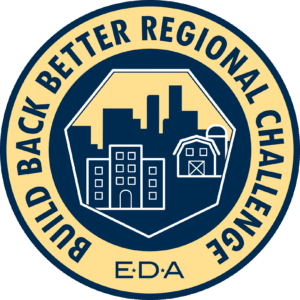
Build Back Better Regional Challenge ($1 Billion)
For more guidance on Build Back Better, see “5 Questions to Shape Your Build Back Better Regional Challenge Application.”
What are the program’s goals?
Reinforce America’s global competitiveness in industries that will shape the future economy; build and strengthen regional clusters that grow those industries; and create high-wage jobs that are resilient to future economic shocks and accessible to historically excluded groups. EDA will award up to $75 million per region to invest in 3 to 8 projects that accelerate growth in these industries and improve job access. Applications should demonstrate a true regional partnership (including across city/county lines and across sectors) and buy-in from local government, industry, and community partners around a shared vision for investment.
How much funding is available?
This is a two-phase program. In Phase 1, EDA will award 50 to 60 regions technical assistance grants of $500,000 to support project definition and coalition building. In Phase 2, EDA will award 20 to 30 regions $25 to $75 million each. EDA will fund 100% of TA costs during Phase 1, and up to 80% of project costs awarded in Phase 2.
What types of projects are eligible?
Construction and non-construction projects, including infrastructure, planning studies, entrepreneurship and workforce programs, revolving loan funds, and more.
You should apply if… You lead a regional partnership that has identified promising growth sectors and can identify at least $25 million of implementation-ready projects that can be delivered by 2027 to sustain long-term job growth and equitable economic development.
When are applications due?
For Phase 1: October 19, 2021, with finalists announced in December. For Phase 2: March 15, 2022.
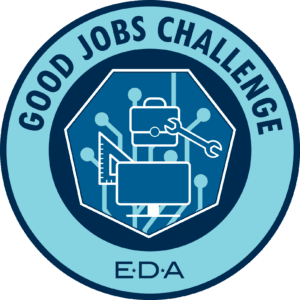
Good Jobs Challenge ($500 Million)
For support on Good Jobs Challenge applications, stay tuned for announcements from HR&A partner America Achieves, a national nonprofit focused on supporting regions with their applications to the Good Jobs and Build Back Better challenges.
What are the program’s goals?
Get Americans back to work by building and strengthening regional workforce training systems through sector partnerships. The program seeks to bring together employers who have hiring needs with entities such as colleges, labor unions, and nonprofit training providers that can help workers develop in-demand skills that lead to good-paying jobs. EDA encourages efforts to reach historically underserved populations and areas, communities of color, women, and other groups facing labor market barriers such as people with disabilities, individuals in recovery, and individuals with past criminal records. Applications should include firm employer commitments to hire, such through work-and-learn programs, apprenticeships, conditional hires pending successful training, and other employer commitments.
How much funding is available?
EDA will award $5 million to $25 million to 25 to 50 applicants. EDA will fund up to 100% of project costs.
What types of projects are eligible?
Proposals may fit into three workforce development phases: 1) System Development, including establishing sector partnerships; 2) Program Design, including assessing skills needs, developing curriculum for training, and recruiting trainers; and 3) Program Implementation, i.e. standing up programs that connect workers with quality jobs, including wraparound services.
Capital expenses, such as equipment and training facility leases, are permitted, but construction activities are not. Any workforce program that requires construction to be successful should apply to the Economic Adjustment Assistance program (see below).
You should apply if… You belong to a consortium focused on workforce training and development within target industries with high job growth potential.
When are applications due?
January 26, 2022, with awards made by July 2022.

Travel, Tourism and Outdoor Recreation ($750 Million)
What are the program’s goals?
Accelerate the recovery of communities that rely on the travel, tourism, and outdoor recreation sectors. Grants can be used for marketing, workforce training, and economic development to safely build back tourism activity, as well as infrastructure and workforce investments that diversify economies that rely too heavily on tourism.
How much funding is available?
Of the $750 million allocation, $510 million will flow non-competitively to States, territories, and the District of Columbia. The remaining $240 million will be awarded through Competitive Tourism Grants to non-State applicants. EDA expects to fund approximately 150 projects that cost between $500,000 and $10 million, although it will consider smaller and larger awards. EDA expects to fund at least 80% of project costs but may increase the federal share up to 100%.
What types of projects are eligible?
Marketing, infrastructure, workforce, or other projects to support the recovery of the tourism industry and economic resilience of the community in the future.
You should apply if… You are city, county, or nonprofit tourism-related entity whose economy relies heavily on tourism, has been impacted by the pandemic, and seeks to jumpstart local visitation. (States do not need to apply for their allocations.)
When are applications due?
Applications are open and will be awarded on a rolling basis. EDA encourages applicants to submit as soon as possible and no later than January 31, 2022.
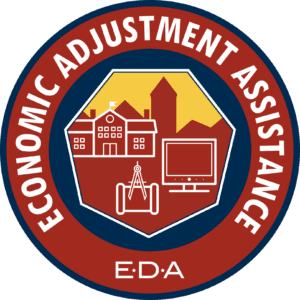
Economic Adjustment Assistance ($500 Million)
What are the program’s goals?
The Economic Adjustment Assistance program is EDA’s most flexible program with grants available for a wide range of projects that help communities plan, build, innovate, and put people back to work through projects that meet local needs.
How much funding is available?
EDA anticipates funding approximately 300 projects that cost between $500,000 and $5 million. As part of the $300 million Coal Communities Commitment, EDA will allocate at least $200 million (40%) to support coal communities. EDA expects to fund up to 80% of project costs, with discretion to fund up to 100%.
What types of projects are eligible?
A wide range of construction or non-construction related projects, including technical, planning, workforce development, entrepreneurship, revolving loan, and public works and infrastructure projects. Tourism-related projects are restricted to the Travel, Tourism, and Outdoor Recreation program.
You should apply if… Your organization has an innovative approach to put people back to work, support economic recovery, and lay the foundation for equitable economic development (and other EDA programs do not seem right for you).
When are applications due?
Applications are open and will be awarded on a rolling basis. EDA encourages applicants to submit as soon as possible and no later than March 31, 2022, to provide adequate time for review and award.
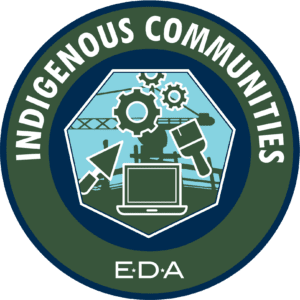
Indigenous Communities ($100 Million)
What are the program’s goals?
Support the needs of Tribal Governments and Indigenous communities that were disproportionately impacted by the pandemic. EDA will support these partners to develop and execute economic development projects that are needed to recover from the pandemic and build economies for the future. Indigenous communities are encouraged to apply for this and other EDA programs.
How much funding is available?
EDA plans on funding projects that cost between approximately $500,000 and $5 million. EDA will fund 100% of project costs and reimburse pre-award engineering and environmental costs.
What types of projects are eligible?
A wide range of construction or non-construction related projects, including technical, planning, workforce development, entrepreneurship, revolving loan, and public works and infrastructure projects. Unlike other EDA programs, this program can fund new community health and higher education facilities.
You should apply if… You lead an Indian Tribe, consortium of Tribes, or a nonprofit serving Native Hawaiians or other Pacific Islanders whose community has been severely impacted by the pandemic and seeks to invest in economic recovery and development.
When are applications due?
Applications are open and will be awarded on a rolling basis. EDA encourages applicants to submit as soon as possible and no later than March 31, 2022, to provide adequate time for review and award.
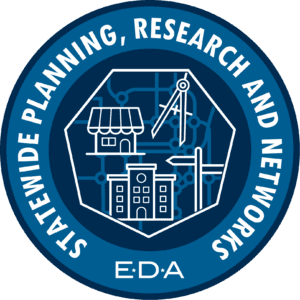
Statewide Planning, Research and Networks ($90 Million)
What are the program’s goals?
The goals are three-fold: 1) to support Statewide Planning that will promote equity and develop resilient economies; 2) to Research the effectiveness of EDA’s new slate of programs; and 3) to develop Networks & Communities of Practice that support EDA program goals and grantees.
How much funding is available?
Of the $90 million, $59 million will flow non-competitively to States, Territories, and the District for Planning Grants $31 million will be awarded competitively for Research and Networks Grants available to any eligible entity. Research grants are expected to range from $200,000 to $600,000, and Networks Grants are expected to range from $2 million to $6 million. EDA will fund 100% of project costs.
What types of projects are eligible?
States can undertake a variety of planning activities, including developing economic development plans, analysis of the needs of persistent poverty communities, hiring disaster recovery coordinators, or statewide broadband data collection. Research Grants should propose real-time research and evaluation of the Good Jobs Challenge, Build Back Better Regional Challenge, Indigenous Communities program, and the Travel & Tourism program. Networks & Communities of Practice proposals should seek to develop sustainable national networks for existing and future EDA grantees or develop a Community of Practice around EDA program grantees, Coal Community grantees, or other areas of need.
You should apply if… You have the expertise and capacity to either evaluate EDA’s new programs or to develop national communities of practice to support equitable economic development. (States do not need to apply for their allocations.)
When are applications due?
Applications for Research and Networks Grants are open and will be awarded on a rolling basis. EDA encourages applicants to submit by October 31, 2022.
Written by Bret Collazzi, Kate Collignon, and Eric Rothman
Last month, the U.S. Economic Development Administration (EDA) launched one of the largest and most ambitious efforts in its history. With support from a $3 billion allocation in the American Rescue Plan, EDA created six new grant programs that drive regional job growth, workforce development, tourism recovery, and more.
The largest of those programs and the first to accept applications is the Build Back Better Regional Challenge, designed to strengthen regional industry clusters and create high-wage jobs in sectors that are resilient to future economic shocks and that reinforce America’s global competitiveness , from cleantech and artificial intelligence to life sciences and ag tech. EDA will award up to 30 regions nationwide as much as $75 million each to invest in projects that accelerate growth in these industries – anything from traditional infrastructure and planning studies to entrepreneurship and workforce programs. The first of two applications is due October 19. (For more details on the program, see our recent guide, developed with the national nonprofit America Achieves.)
Crucially, Build Back Better prioritizes equitable growth. The EDA will favor proposals where job and business opportunities benefit historically excluded groups, including women, people of color, and low-wage workers, as well as distressed geographies, with a $100 million set-aside for coal communities. Ensuring that investment creates broad-based economic opportunity will require a careful pairing of traditional infrastructure and real estate development with targeted workforce development strategies, startup support programs, and investment in backbone infrastructure such as affordable broadband. Successful strategies will require strong partnerships among government, industry, academia, and community organizations.
Build Back Better will be highly competitive. Based on our experience guiding cities, counties, and regional partnerships on transformative investments such as HUD’s Strong Cities Strong Communities and Amazon HQ2, as well as with federal grant programs such as TIGER and Choice Neighborhoods, regions seeking to stand out should consider five fundamental questions:
- What industry sector(s) represent your region’s most promising opportunity to grow high-wage jobs and broad-based economic opportunity? Some regions have placed a big bet on one growth sector; others will need to choose among several. Regions should consider from the start both which sector(s) have the potential to generate the greatest number of high-wage jobs and the potential for these sectors – based on their job profiles, existing employers, and relationships between industry and educators – to provide opportunity broadly across the region and particularly among historically excluded groups.
- What assets give your region a unique competitive advantage for your target sector(s), and what are your limitations? Regional differentiators will vary by industry and region – for some, it’s a hard asset like a port or smart grid; for others, it’s a knowledge base that drives R&D or a quality of life that attracts and retains talent. Regions must be able to tell a story about the strength of these assets relative to other regions’ and about recent progress in strengthening them, whether measured in terms of job growth, wage growth, or private investment. Regions must also articulate the risks to future competitiveness, whether local talent base, business environment, or insufficiency of infrastructure. This discussion becomes the rationale for investment.
- What are your region’s threats to equitable growth and opportunities to address them? Regions must also assess shortcomings in their existing and prospective clusters: What are existing job and wage disparities in target sector(s)? Are new high-wage jobs and business opportunities accessible to women, workers of color, and other underrepresented groups? Are there fundamental investments needed to enable broad job access, such affordable broadband, digital literacy, and transit access to job centers? Build Back Better provides a rare opportunity to connect capital, planning, and programmatic investments – how could applications seek to simultaneously grow total jobs, improve access to jobs for workers of all backgrounds, and address the gaps in access that underpin existing wage and work disparities?
- What promising project models could Build Back Better jumpstart or scale up? In the end, Build Back Better is designed to fund up to eight projects in each region, and because all funds must be spent within five years, applications will be strongest where projects are already at least half-cooked. For programmatic projects such as those focused on workforce and entrepreneurship, regions should assess programs already in place locally that have shown success and could be scaled up with additional funding, as well as successful national models that could be adapted locally. For physical projects, while details such as siting and approvals will be locally specific, regions may be able to import funding frameworks, partnership models, and other strategies from national and global precedents.
- What entity is best positioned to apply for Build Back Better and trusted to lead an inclusive coalition around a shared vision for growth? Build Back Better applications require a lead entity to coordinate approved projects. Just as importantly, regions need a trusted convener to build a coalition among government, industry, academic, and community partners. Who has demonstrated a commitment to equity and inclusion in the past? Who has the capacity to keep partners informed and the expertise to help shape mutually beneficial partnerships? The lead applicant and the convenor need not be the same entity but should trust and respect each other.
The $1 billion allocated through Build Back Better, combined with $2 billion in other EDA funds, will provide a historic down payment on equitable economic development in regions across the United States. High-profile grant competitions such as these provide a rare occasion to convene regional leaders across sectors to align around a vision and priorities that can have lasting impact – regardless of success in the competition. HR&A is excited to shape new paths toward growth that are both equitable and enduring for our clients who pursue Build Back Better and future funding opportunities.
For more information about the Build Back Better program or to discuss your application, please contact us at buildback@hraadvisors.com.
The announcement follows the hiring of two new Senior Analysts in the office, Christina De Giulio and Christopher Broughton. Both bring extensive experience in the Atlanta metro area and across the southeast and will support real estate and economic development projects for the office.
“Since joining HR&A nearly two years ago, I’ve worked to develop the firm’s Knowledge Economy practice, leveraging the innovation economy to guide transformative development,” said Ailstock. “Launching an Atlanta office will allow HR&A to support an even broader audience in the southeast and provide industry-leading services to help guide a just and resilient recovery.”
HR&A is committed to supporting communities across the nation, and formally expanding into the American southeast will bring us closer to that goal. Our projects in Georgia and the surrounding states advance our work to guide an equitable recovery from the pandemic and create more resilient, just communities. Under Mason’s leadership, the Atlanta office will continue HR&A’s work improving the region’s innovation districts, housing, transit, and public spaces.
– Eric Rothman, CEO
For more than 20 years, HR&A has led groundbreaking, innovative projects across the southeast. This includes work in metro Atlanta:
- Advising on the development of Rowen, the 2,000-acre knowledge community connecting industry and education – with economic impact at scale. Located in the Atlanta Metro Region halfway between Atlanta and Athens, the Gwinnett County site is projected to create nearly 100,000 jobs and generate up to $10 billion in annual income at full buildout.
- Guiding the Atlanta University Center Campus Master Plan with financial feasibility and economic development analyses, resulting in identification of opportunities for the schools to consolidate facilities and integrate with the surrounding community through mixed-use development on university owned property surrounding the AUC.
- Partnering with Gwinnett County to lead the Gwinnett Place Mall Equity Plan, which will serve as the foundation for the site’s redevelopment and drive inclusive, equitable development and business opportunities for all of the County’s diverse communities.
- Shaping Georgia Tech’s Tech Square in the heart of Midtown Atlanta where the firm developed a refined vision for the innovation district by identifying and applying best practices in placemaking, real estate value creation, and governance.
- Working on multiple projects with MARTA and the Atlanta BeltLine, exploring opportunities to leverage transit infrastructure investments to foster economic development, access to opportunity, and increase mobility.
- Supporting Resilient Atlanta, a comprehensive and actionable plan to address regional challenges while building capacity to better anticipate and respond to future climate change related shocks.
- Working with the Atlanta Apartment Association to develop models that demonstrate the drivers of housing affordability and cost in the region and understand the impacts of municipal policies on affordability.
- Developing a multi-pronged approach on behalf of the Buckhead Community Improvement District to meet residential demand and expand housing options across a broad range of household incomes in the Buckhead area.